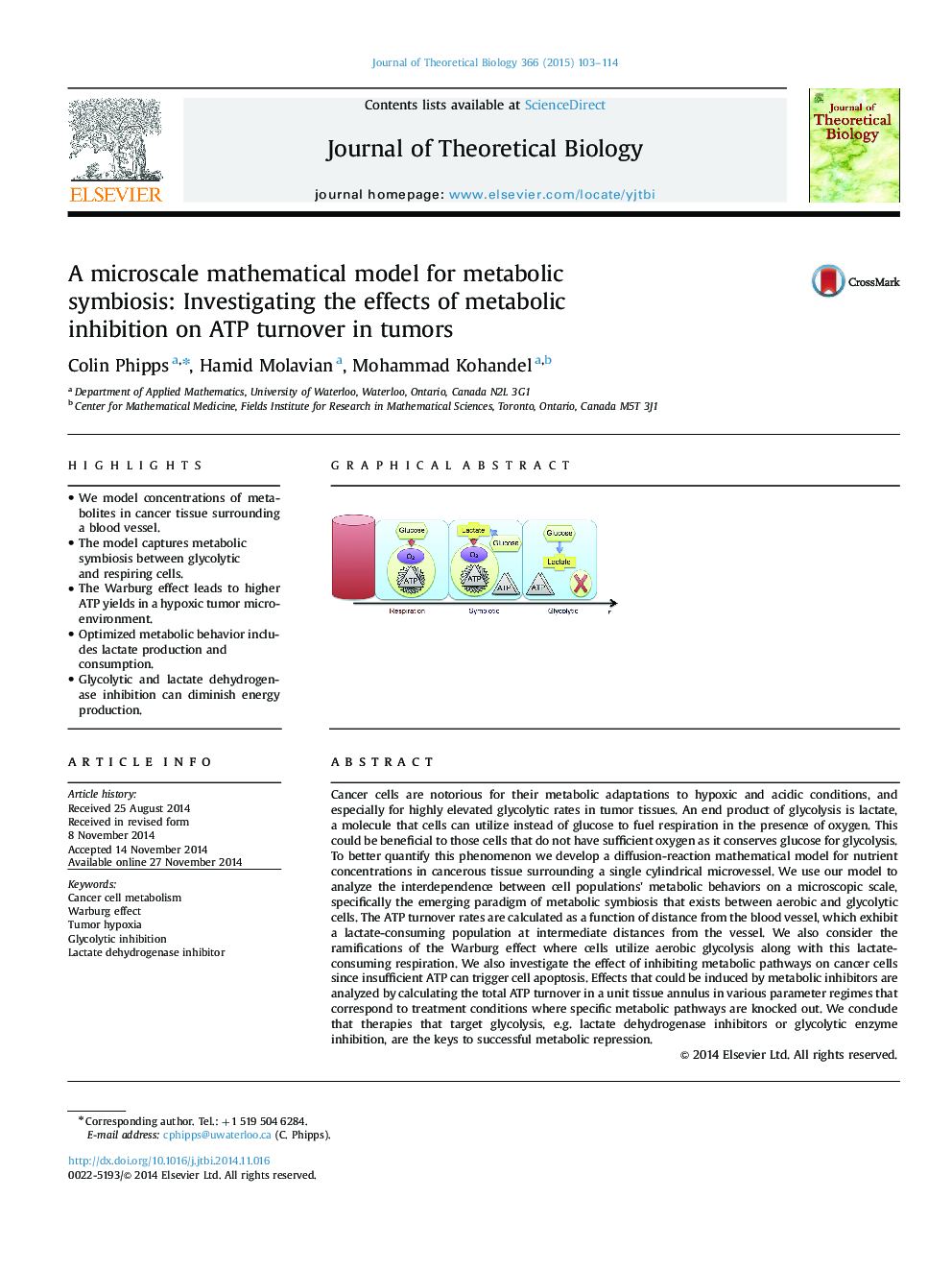| کد مقاله | کد نشریه | سال انتشار | مقاله انگلیسی | نسخه تمام متن |
|---|---|---|---|---|
| 4496074 | 1623844 | 2015 | 12 صفحه PDF | دانلود رایگان |

• We model concentrations of metabolites in cancer tissue surrounding a blood vessel.
• The model captures metabolic symbiosis between glycolytic and respiring cells.
• The Warburg effect leads to higher ATP yields in a hypoxic tumor microenvironment.
• Optimized metabolic behavior includes lactate production and consumption.
• Glycolytic and lactate dehydrogenase inhibition can diminish energy production.
Cancer cells are notorious for their metabolic adaptations to hypoxic and acidic conditions, and especially for highly elevated glycolytic rates in tumor tissues. An end product of glycolysis is lactate, a molecule that cells can utilize instead of glucose to fuel respiration in the presence of oxygen. This could be beneficial to those cells that do not have sufficient oxygen as it conserves glucose for glycolysis. To better quantify this phenomenon we develop a diffusion-reaction mathematical model for nutrient concentrations in cancerous tissue surrounding a single cylindrical microvessel. We use our model to analyze the interdependence between cell populations׳ metabolic behaviors on a microscopic scale, specifically the emerging paradigm of metabolic symbiosis that exists between aerobic and glycolytic cells. The ATP turnover rates are calculated as a function of distance from the blood vessel, which exhibit a lactate-consuming population at intermediate distances from the vessel. We also consider the ramifications of the Warburg effect where cells utilize aerobic glycolysis along with this lactate-consuming respiration. We also investigate the effect of inhibiting metabolic pathways on cancer cells since insufficient ATP can trigger cell apoptosis. Effects that could be induced by metabolic inhibitors are analyzed by calculating the total ATP turnover in a unit tissue annulus in various parameter regimes that correspond to treatment conditions where specific metabolic pathways are knocked out. We conclude that therapies that target glycolysis, e.g. lactate dehydrogenase inhibitors or glycolytic enzyme inhibition, are the keys to successful metabolic repression.
Figure optionsDownload as PowerPoint slide
Journal: Journal of Theoretical Biology - Volume 366, 7 February 2015, Pages 103–114